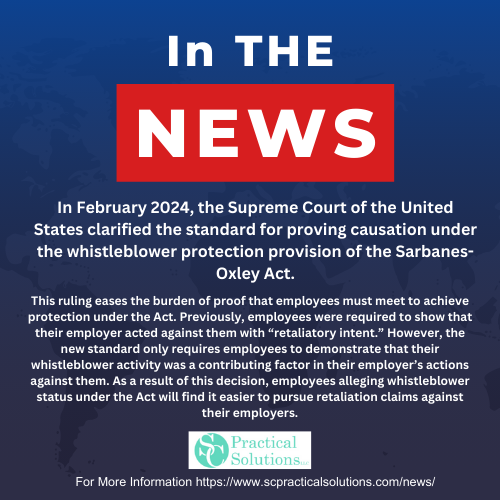
In February 2024, the Supreme Court of the United States clarified the standard for proving causation under the whistleblower protection provision of the Sarbanes-Oxley Act. This ruling eases the burden of proof that employees must meet to achieve protection under the Act. Previously, employees were required to show that their employer acted against them with “retaliatory intent.” However, the new standard only requires employees to demonstrate that their whistleblower activity was a contributing factor in their employer’s actions against them. As a result of this decision, employees alleging whistleblower status under the Act will find it easier to pursue retaliation claims against their employers1. Employers should exercise caution when taking adverse actions against employees engaged in activity protected by the law.
Additionally, leading whistleblower attorney Stephen M. Kohn outlines seven urgently needed reforms to U.S. whistleblower laws and policy2. Furthermore, companies subject to the Security Exchange Act should review their employment agreements, employee handbooks, separation agreements, and other confidentiality provisions to ensure compliance with Rule 21F-17(a), as there is little indication that the SEC intends to slow down its enforcement efforts in 20243.
LEARN MORE – WHAT WHISTLEBLOWERS WILL NEED FROM CONGRESS IN 2024
LEARN MORE – WHAT IS A WHISTLEBLOWER
LEARN MORE – US DEPARTMENT OF LABOR
LEARN MORE – WHISTLEBLOWER PROGRAM STATUTES AND RULES
Posted In: Resource Information